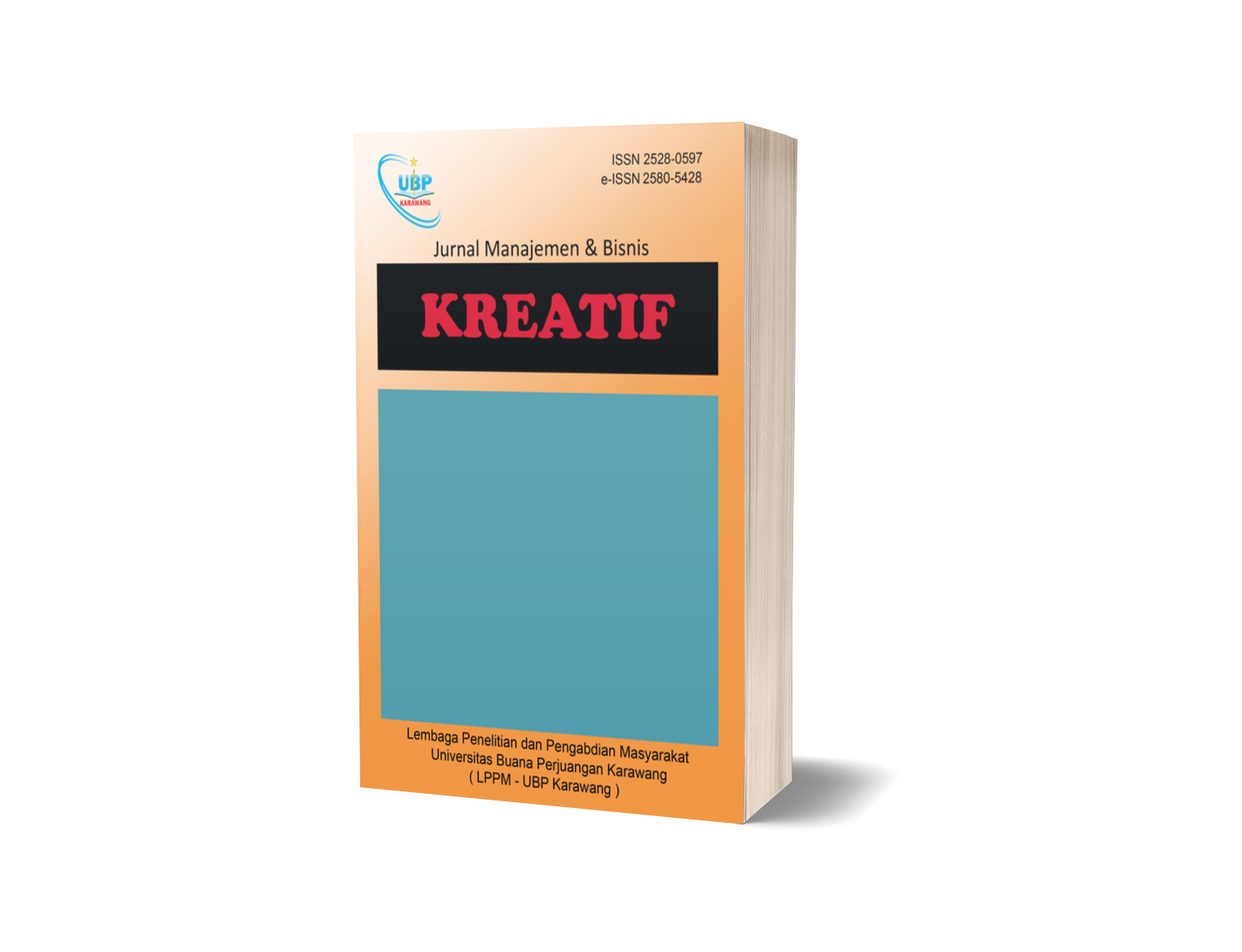ANALISIS PENGARUH PROFITABILITAS, SOLVABILITAS, AKTIVITAS, DAN RISIKO INVESTASI TERHADAP RETURN SAHAM PADA PERUSAHAAN SEKTOR OTOMOTIF DAN KOMPONEN
DOI:
https://doi.org/10.36805/manajemen.v3i1.242Abstract
Abstrak Penelitian ini bertujuan untuk menguji adanya pengaruh kinerja keuangan (profitabilitas, solvabilitas, aktivitas) dan risiko investasi terhadap return saham perusahaan. Profitabilitas diukur dengan menggunajan Net Profit Margin (NPM). Solvabilitas diukur dengan menggunakan Debt to Equity ratio (DER). Rasio Aktivitas diukur dengan menggunakan Total Asset Turnover (TATO). Risiko investasi diukur dengan menggunakan standar deviasi. Penelitian ini menggunkana pendekatan kuantitatif dengan metode regresi berganda. Penelitian ini menggunakan sampel berupa perusahaan-perusahaan sektor otomotif dan komponennya yang listing di Bursa Efek Indonesia periode 2011-2015. Dengan total sampel yang digunakan adalah 12 perusahaan. Hasil penelitian menunjukkan bahwa secara simultan rasio profitabilitas (net profit margin), solvabilitas (debt to equity), aktivitas (total asset turnover), dan risiko investasi berpengaruh secara signifikan terhadap return saham sebesar 45,7%. Sedangkan secara parsial hanya net profit margin dan risiko investasi saja yang berpengaruh dan signifikan terhadap return saham. Kata kunci: Profitabilitas, Solvabilitas, Aktivitas, Risiko Investasi, dan Return Saham. Abstract The purpose of this study is to impact of financial performance which measured by profitability, solvability, activity, and investment risk toward the company’s stock return. Profitability is measured by net profit margin (NPM). Solvability is measured by debt to equity ratio (DER). Activity is measured by total asset turnover (TATO). Investment risk is measured by deviation standard. This study uses quantitative approach with multiple regression method. This study uses sample of The Otomotive and Component Company which listed in Indonesia Stock Exchange period 2011-2015. The total of the sample which used in this study is 12 companies. Result show that simultant profitability ratio (NPM), solvability ratio (DER), activity ratio (TATO), and investment risk of significantly influence on stock return shares of 45,7. While partial only variable net profit margin and investment risk significantly influence toward stock return. Keyword: profitability, solvability, activity, investment risk, stock return.Downloads
References
DAFTAR PUSTAKA
Fakhruddin, Firmansyah dan Hadianto. 2001. Manajemen Investasi Portofolio. Jakarta: Salemba Empat.
Hanafi, Mamduh M. 2010. Manajemen Keuangan: Teori dan Aplikasi. Yogyakarta: BPFE UGM.
Harahap, Sofyan Syafri. 2008. Analisis Kritis atas Laporan Keuangan. Jakarta: PT. Raja Grafindo Persada.
Jogiyanto, Hartono. 2009. Teori Portofolio dan Analisis Investasi. Edisi Keenam. Yogyakarta: BPFE.
Munawir, S. 2007. Analisis Laporan Keuangan. Yogyakarta: Liberty.
Sartono, agus. 2001. Manajemen Keuangan dan Aplikasi, Edisi 2. Yoyakarta: BPFE UGM.
Sawir, Agnes . 2005. Analisis Kinerja Keuangan dan Perencanaan Keuangan Perusahaan. Jakarta : PT. Gramedia Pustaka Utama.
Siegel, Joel., dan Jae K Shim. 2011. Amus Istilah Akuntansi. Jakarta: PT. Elex Media Komputindo.
Sugiyono. 2012. Metode Penelitian Bisnis. Bandung: Alfabeta.
Downloads
Published
Issue
Section
License
Authors who publish in Jurnal Manajemen dan Bisnis Kreatif agree to the following terms:
- Authors retain copyright and grant the journal right of first publication with the work simultaneously licensed under a Attribution-ShareAlike 4.0 International (CC BY-SA 4.0) License that allows others to share the work with an acknowledgment of the work's authorship and initial publication in this journal.
- Authors are able to enter into separate, additional contractual arrangements for the non-exclusive distribution of the journal's published version of the work (e.g., post it to an institutional repository or publish it in a book), with an acknowledgment of its initial publication in this journal.
- Authors are permitted and encouraged to post their work online (e.g., in institutional repositories or on their website) prior to and during the submission process, as it can lead to productive exchanges, as well as earlier and greater citation of published work (See The Effect of Open Access).








